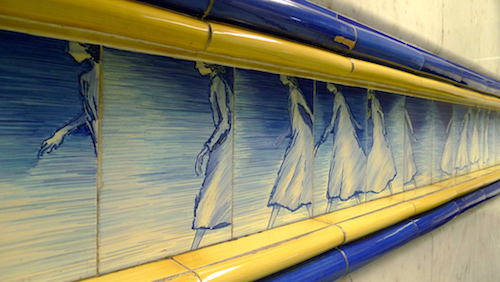
Almost every Lisbon guidebook calls the subway system “an underground museum.” Sounds a bit cliché, but Metro stations contain so many different tile panels that the phrase holds true. However, the original network almost neglected any type of decoration. Here’s how Lisboa’s Metro became a vibrant gallery space & the perfect thing to visit on a rainy day.
Plans for a subway system in Portugal’s capital city were initially proposed in 1888 but postponed for decades. As thanks for remaining neutral during the Second World War, funds from the Marshall Plan in 1948 helped the nation industrialize & modernize its transportation system. Construction began in 1955 under the supervision of Francisco Keil do Amaral, who had already built the Lisbon airport, designed public parks & was responsible for Portugal’s pavilions in several international expositions.
Budget restraints soon began to affect construction. Informed that there was no money allocated for decoration, Keil do Amaral threatened to abandon the project. But his wife came up with the perfect solution. Maria Keil began using small mosaic tiles often found in swimming pools because they were cheap & easy to obtain (still visible on some older, unmodified platforms like Avenida). But she could not resist making more attractive designs.
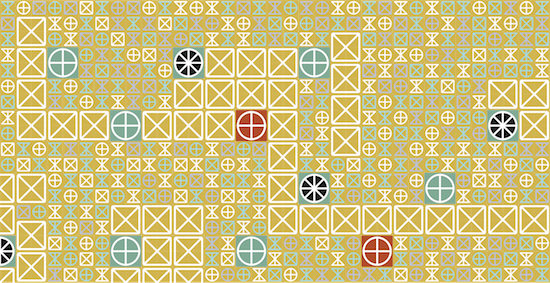
Keil had already distinguished herself as a respected artist, tackling painting & graphics for advertising. Contemporaries urged her not to take on a project with azulejos… seen as passé & of little artistic merit in the 1950’s. Maybe it was devotion to her husband or just the challenge itself, but Keil pushed ahead. Working in the Viúva Lamego factory, she only received a worker’s salary. When the system opened to the public in December 1959, Keil’s work left a lasting imprint on the city. Keil was quoted for a 2013 retrospective of her work:
O Metropolitano não podia ficar com as paredes de cimento. Não sei se fiz bem, se fiz mal. Olhe, fiz.
The Metro could not have just cement walls. I don’t know if I did a good job or not. But hey, I did something.
What an understatement! I’ll write more about Maria Keil in the future because she is one of my favorite Portuguese artists, but for now let’s give her credit for having the foresight to add artwork to many people’s daily commute. The subway continues to grow & thanks to Keil’s legacy, every new station contains tiles. She passed away in 2012 at the age of 97, but not before decorating the expansion of the São Sebastião station in 2009… a fitting final work. The well-researched blog Restos de Colecção contains a wonderful gallery of images of the Metro, past & present.
I knew the Endless Mile tile guide to Lisboa would be incomplete without including the Metro, but which were the most innovative tile panels? And how many of the 50+ stations to recommend? While the info-packed, official website for the Metro had details about artists & inaugurations, no list existed with the location of each & every panel. Was the atrium decorated or also the platforms? So many questions & only one way to find out… visit all stations! Fortunately a 24-hour pass allows unlimited access, exactly what I needed for taking notes:
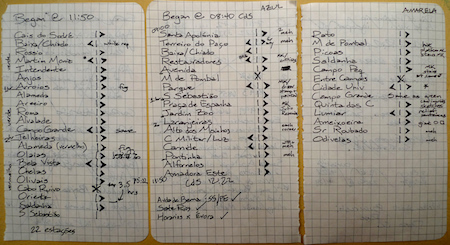
After going through all my notes & photos as well as drawing a Metro map, I decided to recommend three stations per line based on personal preference, uniqueness or historical value. Those stations are marked below with red asterisks, plus a screen capture from the guide gives you a preview of photos in this blog series. Solid, grey circles mark the original extension of the subway when it opened in 1959.
In the coming days, I’ll write a separate post about each Metro line with photos for every station… a virtual visit. If you get inspired, remember that a Viva Viagem 24-hour pass is the most economic way to station hop. A word of advice: the four stations of Odivelas, Alfornelos, Amadora Este & Reboleira sit outside the 24-hour pass fare zone. But there are plenty of other stations to visit. You aren’t missing much 😉 Stay tuned!
Lisbon Metro, tile series: Basics • Linha verde • Linha azul • Linha amarela • Linha vermelho
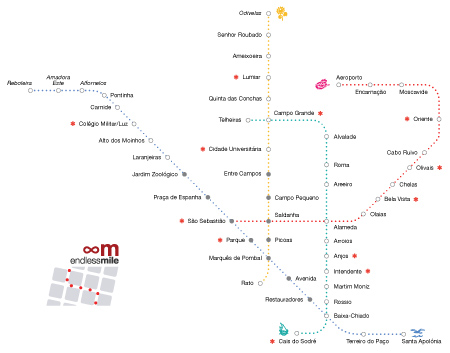
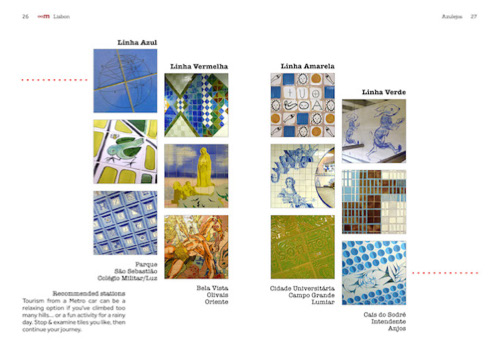
Pingback: Anonymous